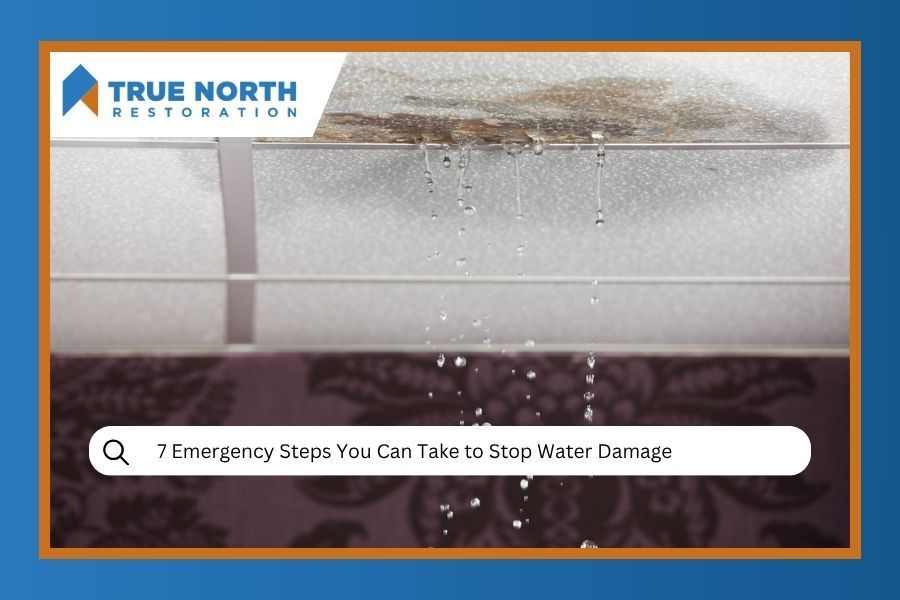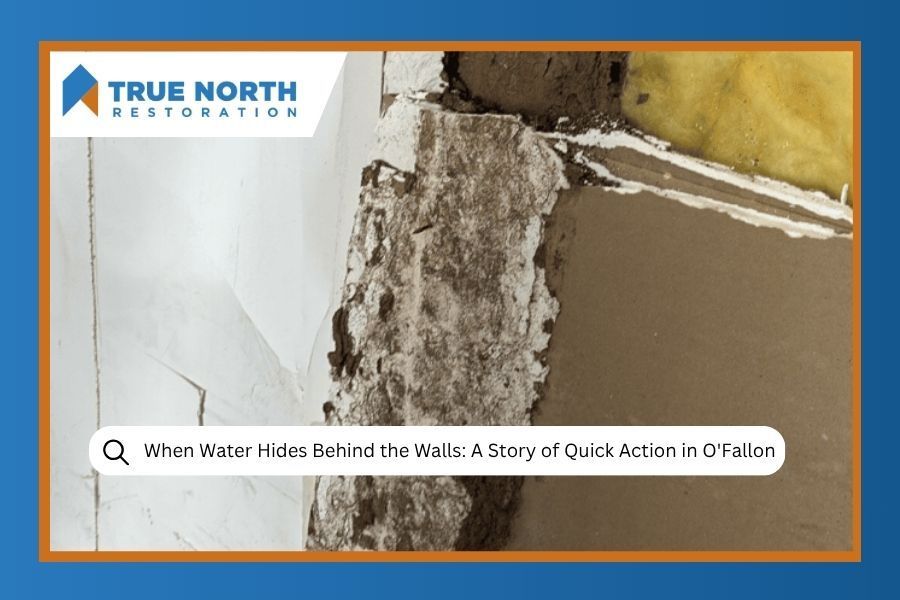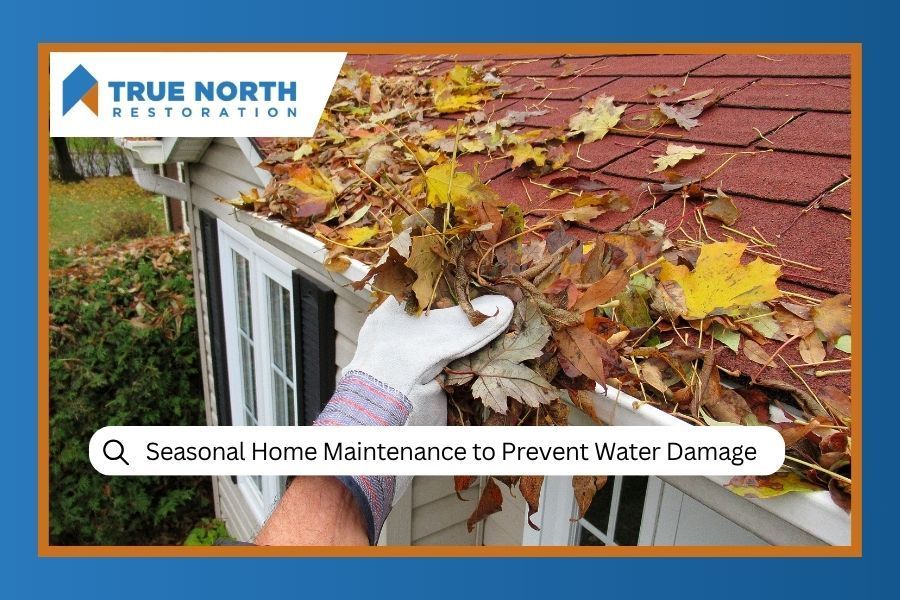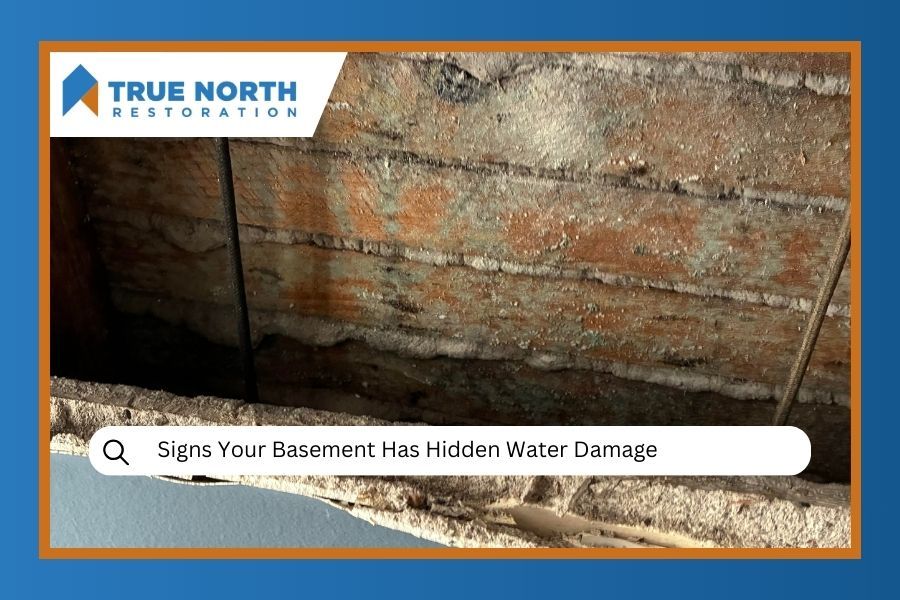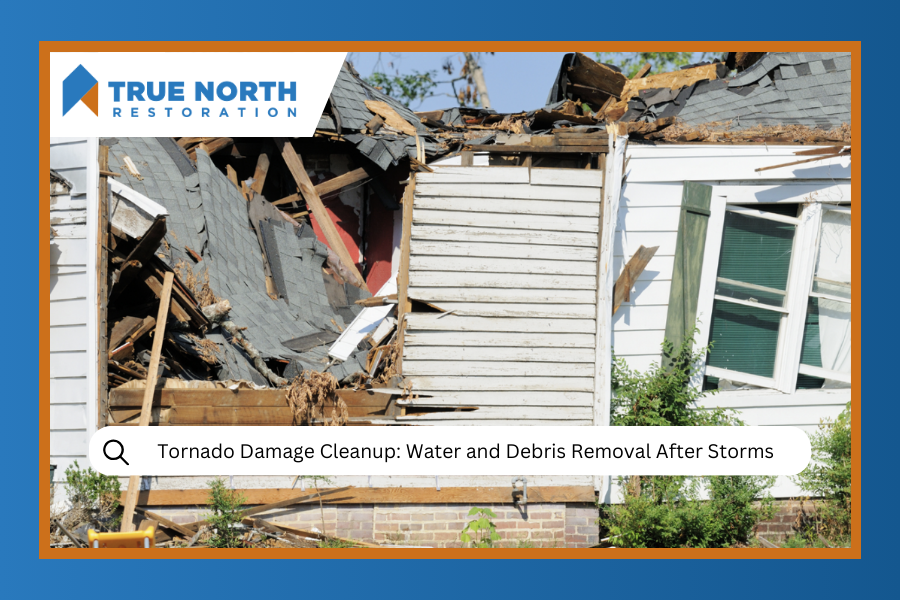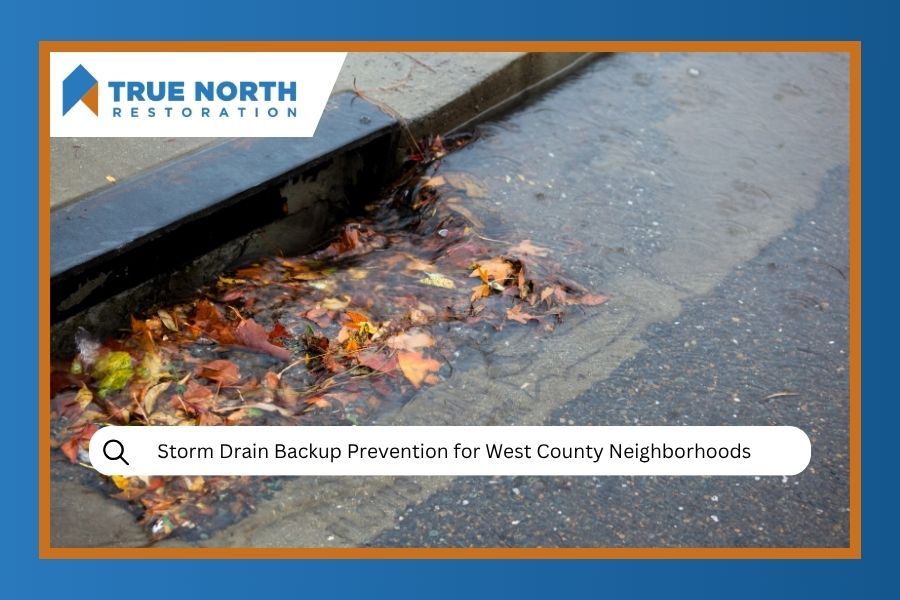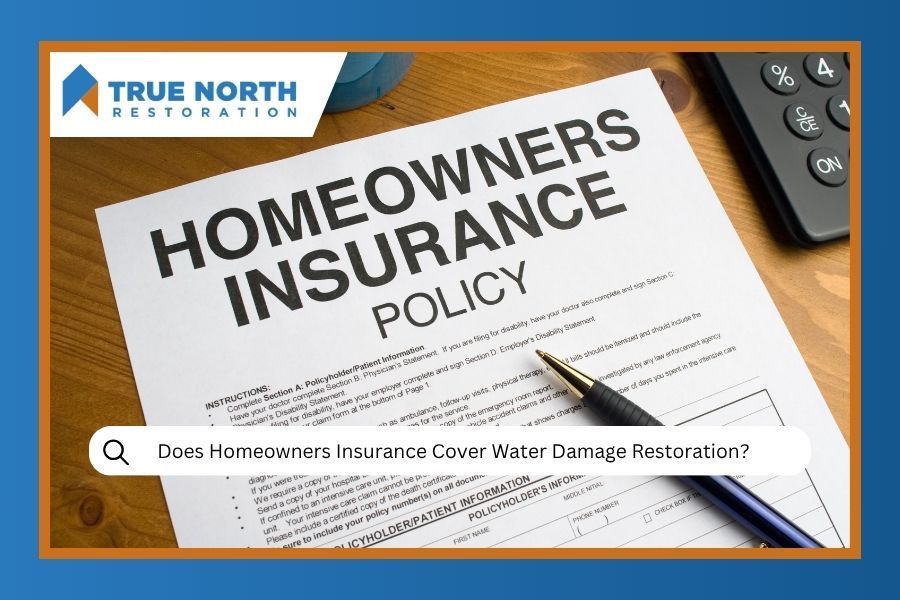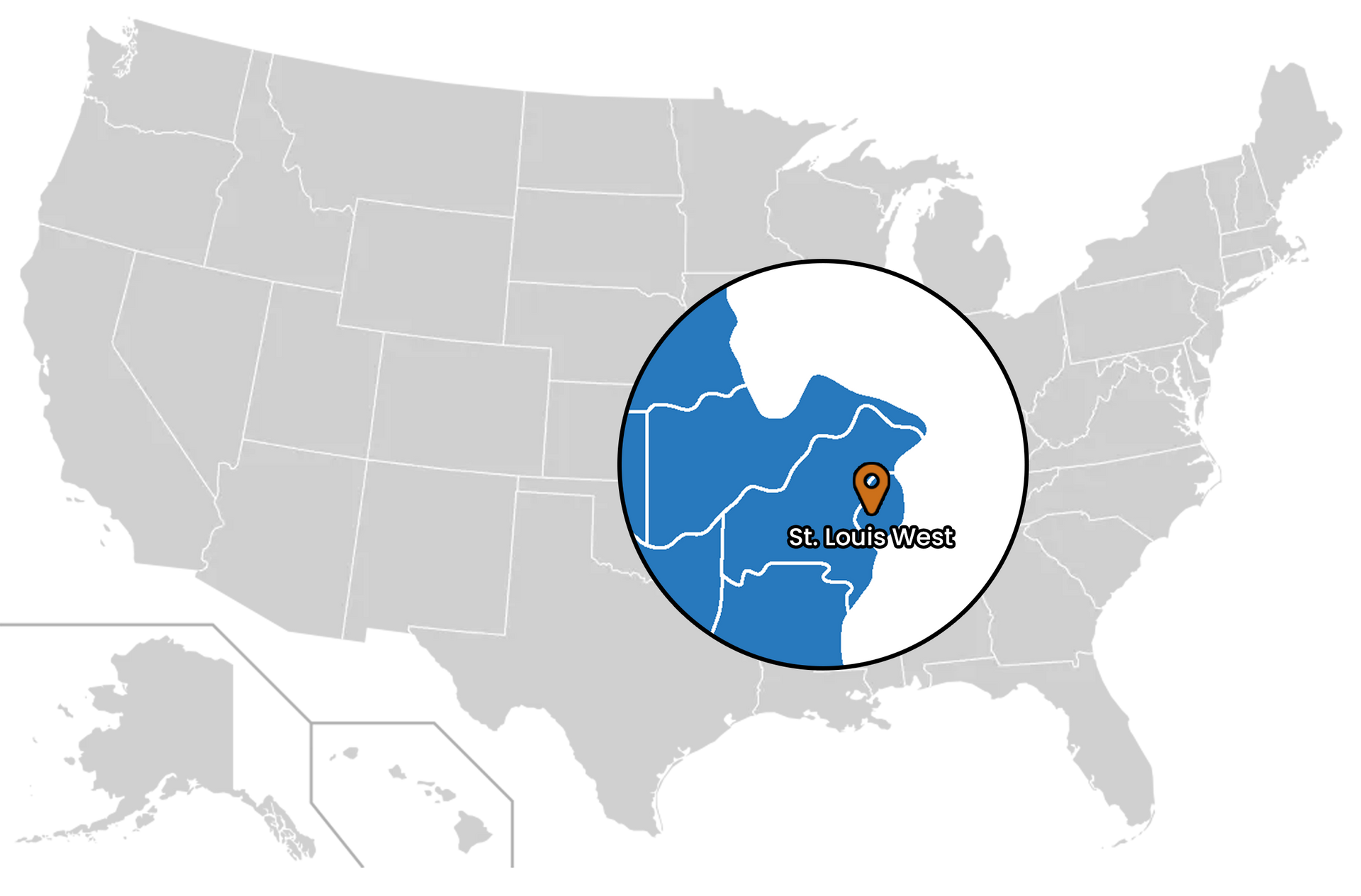Jump To Section:
- Step 1: Safety First, Always
- Step 2: Stop the Water Source
- Step 3: Document Everything for Insurance
- Step 4: Remove Water and Moisture ASAP
- Step 5: Move and Protect Your Belongings
- Step 6: Improve Air Circulation and Start Drying
- Step 7: Call Professional Water Damage Restoration Services
- Emergency Water Damage Checklist
- Frequently Asked Questions
Nobody plans for a water emergency, but here in Chesterfield and West County, they happen more often than we'd like. Whether it's a burst pipe during one of our brutal winter freezes, a sump pump that decides to take a vacation during spring rains, or that water heater that finally gives up the ghost, water damage waits for no one.
The good news? You're not powerless. While our team at True North Restoration provides professional water damage restoration services 24/7, there are immediate steps you can take right now to minimize the damage and potentially save yourself thousands of dollars in repairs.
Let's dive into the seven emergency actions that can make all the difference when water starts wreaking havoc in your home.
Quick Reference: 7 Emergency Steps Visual Guide
Step 1: Safety First, Always
Before you do anything else, take a deep breath and assess the situation. Is the water coming from a clean source like a burst supply line, or are we dealing with something nastier like a sewage backup? If you're looking at contaminated water, step back and let the professionals handle it.
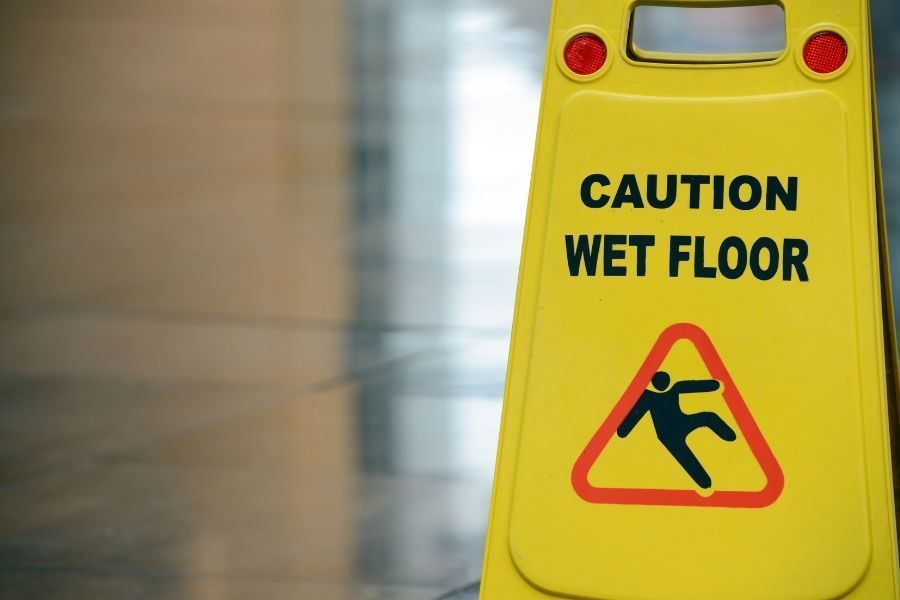
Check for these safety hazards:
- Standing water near electrical outlets or appliances
- Sagging ceilings that might collapse
- Slippery surfaces that could cause falls
- Any signs of structural damage
If you see sparks, smell gas, or notice any electrical issues, evacuate immediately and call emergency services. No amount of water damage is worth risking your safety or your family's wellbeing.
Step 2: Stop the Water Source (If Possible)
This might sound obvious, but you'd be surprised how many people skip this crucial step in their panic. If you can safely identify and stop the source, do it now.
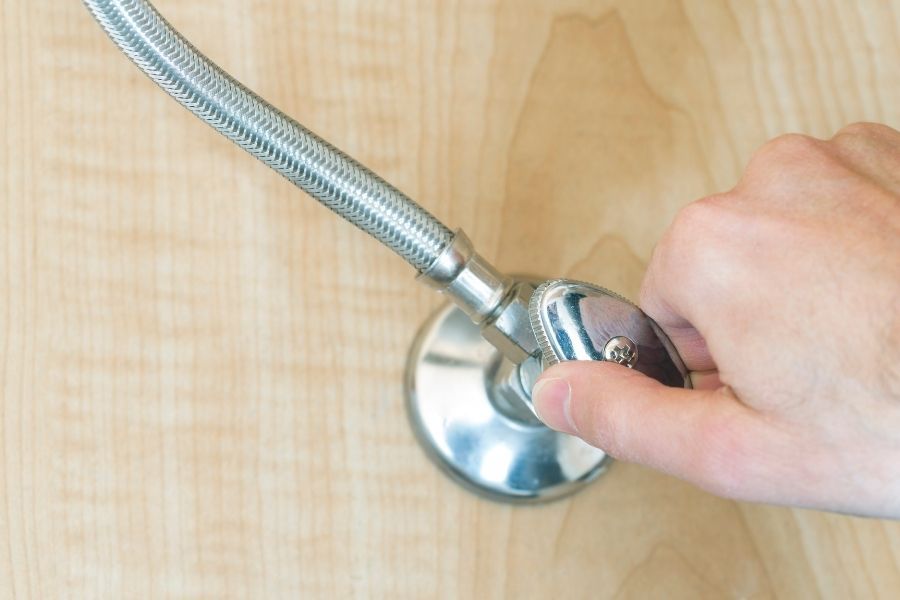
Quick Water Shutoff Guide:
- Burst pipes: Turn off the main water supply at the street meter or where the main line enters your home
- Appliance leaks: Shut off the water supply valve behind the appliance
- Toilet overflows: Turn the valve behind the toilet clockwise
- Sump pump issues: Unfortunately, Mother Nature controls this one, but you can redirect water away from the foundation if possible
Pro tip: Know where your main water shutoff is before you need it. It's usually near where the water line enters your house, often in the basement or crawl space. In Chesterfield homes, it's commonly found near the front of the house.
🚨 Need immediate help? Don't wait!
Our certified professionals at True North Restoration are standing by 24/7 with a 45-minute response time.
Call Now: (314) 557-3990Step 3: Document Everything for Insurance
I know, I know. The last thing you want to do when you're standing in ankle-deep water is take photos. But trust me on this one, your future self (and your insurance adjuster) will thank you.
What to document:
- The water source and affected areas
- Damaged belongings and furniture
- Water levels and how far the damage extends
- Any structural damage you can see
- Time and date stamps on all photos
Take photos before you move anything or start cleanup. This documentation is golden when it comes to insurance claims, and it's something our team at True North can help you navigate later.
Step 4: Remove Water and Moisture ASAP
Time is not your friend when it comes to water damage. The longer water sits, the more damage it causes, and the higher the chances of mold growth (which can start in as little as 24-48 hours in our humid Missouri climate).
| Water Amount | Recommended Method | Equipment Needed | Time Priority |
|---|---|---|---|
| Small puddles/spills | Mop and towels | Absorbent materials | Immediate |
| 1-2 inches standing | Wet/dry vacuum | Shop vacuum | Within 1 hour |
| Several inches | Water extraction pump | Rental equipment | Call professionals |
| Contaminated water | Professional only | Specialized gear | Evacuate area |
Important: Only attempt this if the water is clean and the area is safe. If you're dealing with more than a few inches of water, or if it's contaminated, call in the professionals.
Step 5: Move and Protect Your Belongings
Get your stuff to safety! Water doesn't discriminate, and it'll ruin everything in its path if given the chance.
Priority items to move:
- Electronics and appliances
- Important documents and photos
- Furniture (especially wood pieces)
- Clothing and textiles
- Anything with sentimental or high monetary value
For furniture you can't move, place aluminum foil or plastic sheeting under the legs to prevent further water absorption. If you're dealing with valuable antiques or electronics, prioritize getting those to completely dry areas, and consider calling specialists if items are particularly valuable.
External resources like the EPA's flood cleanup guidelines can provide additional safety information, though remember that every situation is unique.
Step 6: Improve Air Circulation and Start Drying
Stagnant air is mold's best friend, so let's not give it that advantage. Get air moving throughout the affected area as soon as it's safe to do so.
Effective Drying Strategies:
- Open windows and doors (weather permitting)
- Use fans to create cross-ventilation
- Run dehumidifiers if you have them
- Turn on your HVAC system to help circulate air
- Remove wet carpets and padding if possible
Remember, our St. Charles County humidity can work against you here, especially during summer months. Sometimes opening windows might actually add moisture to the air, so use your judgment based on outside conditions.
The Red Cross disaster preparedness resources offer additional guidance on emergency response, though professional assessment is always recommended for significant water events.
Step 7: Call Professional Water Damage Restoration Services
Here's where I level with you: while these DIY steps are crucial for minimizing immediate damage, they're just the beginning. Professional water damage restoration involves specialized equipment, moisture detection tools, antimicrobial treatments, and expertise that most homeowners simply don't have access to.
Professional restoration teams can:
- Extract water from areas you can't reach
- Detect hidden moisture in walls and floors
- Prevent mold growth with proper drying techniques
- Handle insurance paperwork and claims
- Restore your home to pre-damage conditions
We've seen too many well-intentioned DIY efforts turn into bigger problems down the road. What looks dry on the surface might be harboring moisture in places you can't see, leading to mold growth, structural damage, or worse.
Get Professional Water Damage HelpEmergency Water Damage Checklist
Here's a quick reference guide you can bookmark or print:
Immediate Actions (First 30 minutes):
- Ensure safety, evacuate if necessary
- Stop water source if possible
- Take photos for insurance
- Call water damage restoration professionals
Short-term Actions (First 24 hours):
- Remove standing water
- Move belongings to safety
- Start drying process with fans/dehumidifiers
- Contact insurance company
- Monitor for signs of mold growth
When Your World Heads South, Go True North
Water emergencies are stressful, overwhelming, and frankly, they usually happen at the worst possible times. But remember, you're not alone in this. Taking these immediate steps can significantly reduce the damage to your Chesterfield home, but they're just the first part of the restoration process.
At True North Restoration, we understand that your home is more than just a building – it's where your family creates memories, where you feel safe, and where you've invested your hard-earned money. That's why we're committed to bringing your world back to normal with integrity, professionalism, and genuine care.
Our IICRC-certified professionals have the training, equipment, and experience to handle everything from minor water heater leaks to major flooding events. We work with all insurance companies and we're locally owned and operated right here in the community we serve.
Don't let water damage turn your sanctuary into a source of stress. Contact True North Restoration today, and let us help you get back to what matters most.
Frequently Asked Questions
Should I attempt all 7 emergency steps myself, or are some better left to professionals?
Steps 1-3 (safety, stopping water source, documentation) are absolutely things you should do immediately. Steps 4-6 (water removal, moving belongings, drying) are great for minor situations, but if you're dealing with more than a few inches of water, contaminated water, or water affecting multiple rooms, skip to step 7 and call us right away. Your safety and the integrity of your home are more important than attempting DIY solutions beyond your capability.
How do I know if I've successfully stopped the water source in step 2?
After turning off the main water supply or appliance valve, wait 10-15 minutes and check if new water is still appearing. If the water level continues rising or you hear running water, you may have multiple sources or the shutoff isn't working properly. In Chesterfield homes, sometimes frozen pipes can have multiple breaks that aren't immediately apparent. If you can't definitively stop the flow, call us immediately.
What if I can't safely access the area to remove water and belongings in steps 4-5?
Never risk your safety trying to access flooded areas. If water is deep, electrical hazards exist, or the area is structurally compromised, evacuate and wait for professional help. Our team has specialized equipment and training to safely extract water from dangerous areas. Document what you can see from a safe distance and let us handle the rest.
During step 6 (drying), how can I tell if my efforts are actually working?
Look for visible reduction in standing water, decreasing humidity levels if you have a hygrometer, and surfaces that feel less saturated to the touch. However, be aware that even if surfaces appear dry, moisture can be trapped in walls, subflooring, and insulation where you can't detect it. This hidden moisture is why professional moisture detection and drying is so crucial, even after your initial emergency steps.



